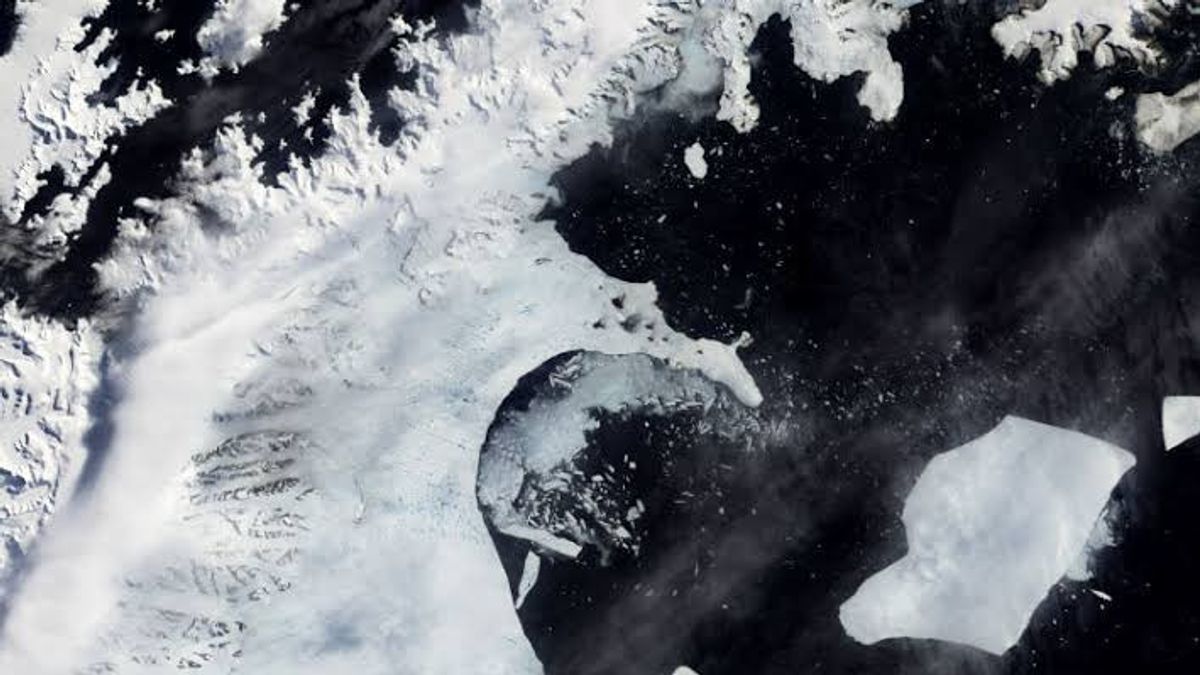JAKARTA - The Conger ice sheet covering 1,200 square kilometers and the size of New York City or Rome has reportedly collapsed in East Antarctica. This incident is claimed to have occurred because of the extraordinary warmth on the continent.
According to reports at the Concordia research station, the Conger ice sheet collapsed on March 15. At that time the temperature soared to -12 degrees Celsius, more than 40 degrees warmer than usual.
NASA Earth scientist Catherine Colello Walker tweeted an image of the March 25 collapse, saying it was one of the most significant events in Antarctica since the Larsen B ice sheet collapsed in 2002.
New @usnatice-named icebergs resulting from complete collapse of East Antarctica's Conger Ice Shelf (~1200 sq. km) on/around March 15, seen in combo of #Landsat and #MODIS imagery. #CongerIceShelf #Antarctica @helenafricker @jdmillstein https://t.co/16JtKcXQPY pic.twitter.com/lSKMNgRgNi
— Catherine Colello Walker (@CapComCatWalk) March 24, 2022
The Larsen B ice sheet on the Antarctic Peninsula in West Antarctica covers about 3,250 square kilometers, "(Perhaps) it reached a tipping point following the Antarctic atmospheric rivers and heat waves too?," Dr Colello Walker said along with his post.
Antarctica is the coldest place on Earth, which makes the recent warming event very worrying for many scientists. Just a month ago, data showed Antarctica would set a record this year for lowest sea ice levels, the area of ocean covered by sea ice around the continent.
Ice shelves like the Conger are extensions of land ice sheets and glaciers that protrude above the ocean. They help prevent that ice sheet from feeding ice relentlessly into the ocean.
When a shelf collapses, there tends to be an increase in ice flowing from the land into the ocean, causing sea level rise, a phenomenon that threatens coastal communities around the world.
More research will be needed to determine if the recent heat wave was directly linked to the collapse, but Matt King, director of the Australian Center for Antarctic Science Excellence at the University of Tasmania, suggested it could be a factor.
"We don't know (what the impact of the heat wave is) and that is something to explore further. What is clear is that this area has been in decline since the 1970s," said Professor King.
However, the event is a worrying sign as East Antarctica is considered the highest, driest, coldest region on the continent.
Professor King said this event is a reminder of the unknown in predicting how fast sea levels may rise in the future.
"A large interrupt event like this, especially if it occurs in parts of Antarctica where the ice sheet helps hold large amounts of ice, can throw off projections. This is the first time we've seen the (East Antarctica) ice sheet crumble," Professor King said.
"This is a good reminder that East Antarctica can change dramatically and rapidly, and there are key areas we need to understand better," he added.
Lastly, Professor King says we haven't seen warming actually increase the rate of melting in Antarctica, but it's only a matter of time before we start to see it.
"If you look over the Arctic, you see the dramatic degree of warming and decline in sea ice. Antarctica hasn't seen that, but it will come to us. The question of how much and how fast can we reduce carbon emissions," said Professor King.
The English, Chinese, Japanese, Arabic, and French versions are automatically generated by the AI. So there may still be inaccuracies in translating, please always see Indonesian as our main language. (system supported by DigitalSiber.id)










